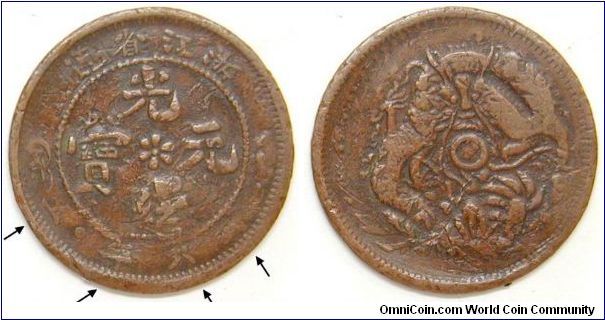
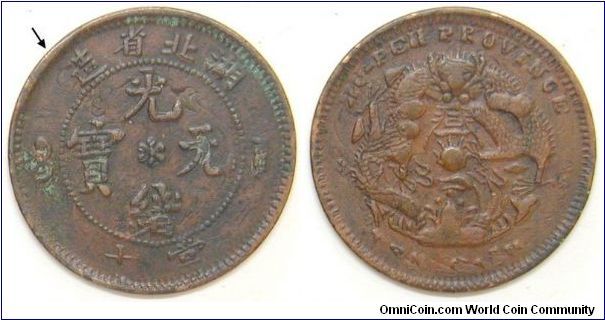
Chinese Provinces that issued machine struck coins, from 1900s to 1950s
China has a great history of over 5000 years. It was only the last 100 years when the country fell apart due to its corrupted internal affairs as well as foreign invaders coming into the country, virtually tearing the country apart. This is known as the century of humiliation. It took well over half a century to reunite the messed up country. New coining technology started to flow into the country. Within this short period of time, China has struck virtually hundreds, if not thousands of different varieties of coins if you account for all provinces. Pretty remarkable when coins were cast not just too long ago. Some cities or provinces were created, some were dissolved.
Chinese coins can be a real challenge to collect as Chinese characters may turn off people who find them difficult to read. Dates are dated in sexagenary cycle. For more information, please read here: Sexagenary Cycle. I have added a table at the end. Even the English spelling of the provinces can be different as they were spelt in Wade-Giles and not resemble pinyin. On top of that, with so much counterfeits cranked out every minute, it makes collecting Chinese coins totally undesirable.
Within this chaotic period of time, China's coinage has seen fascinating designs as well as how they battled with metal issues as there were copper shortage that they faced. In Eastern part of China, some provinces imported Korean 5 fun coins to be overstruck as 10 cash. These could have been the work of fraudulent crooks. Some coins were struck with lower copper content till the colour difference became obvious. When copper content is lowered, more tin or lead is usually added, making the coin look more yellowish.
 |
 |
| Zhejiang 10 cash over Korean 1902 5 fun | Hubei 10 cash over Korean 1898 5 fun |
Sometimes it seems that copper shortage wasn't the only issue - dies had to be imported from other provinces but would someone be careless enough to not note the provinces on the dies are not the same? Maybe taking some English lessons would have helped.
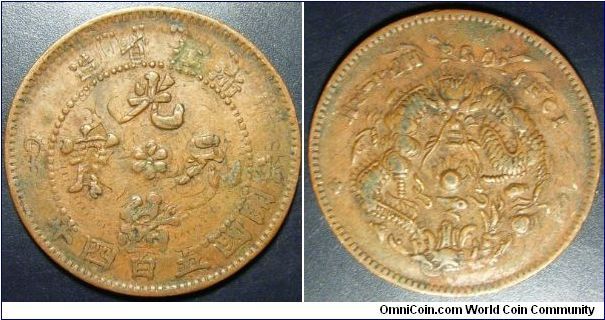 |
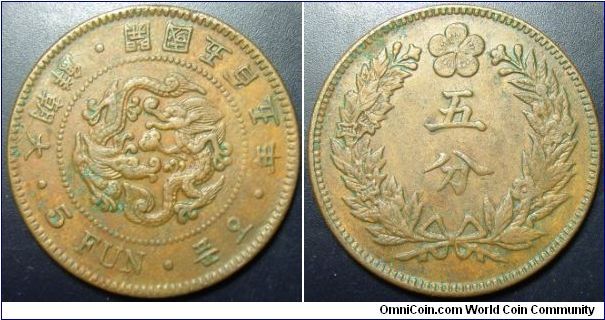 |
| Impossible mule of Zhejiang / Hubei 10 cash overstruck over 1895 5 fun | Korean 5 fun. This is dated 1896 |
Overstriking didn't just end there using Korean 5 fun coins - some provinces used other province coins to strike their coins! One of the best known example is East Turkestan coins overstruck over Sichuan coins. Not surprising as East Turkestan lasted for about 9 months.
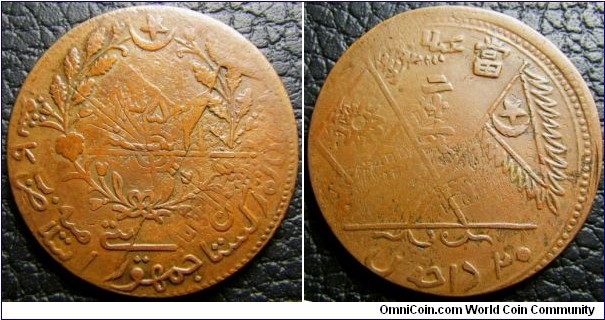 |
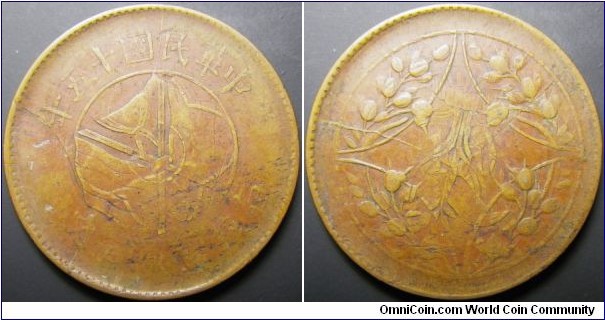 |
| East Turkestan 20 cash overstruck over Sichuan 10 cash | Sichuan 100 cash overstruck over Honan 20 cash. |
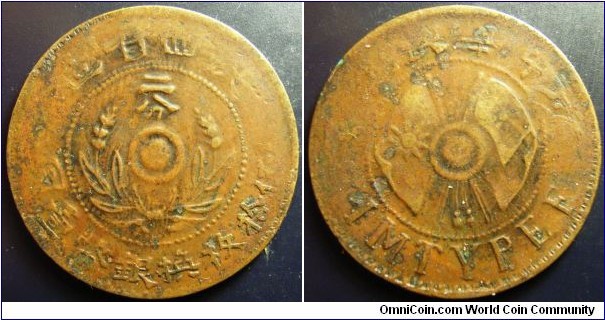 |
|
| Shannxi 2 cents overstruck over Honan 20 cash |
In Guizhou Province, they had lots of antimony but copper had to be imported. The government's solution to their coinage? World's only antimony coins! But they were never popular. Pretty ironic that they were worth less than 1/4 cents back then but now it's worth thousands of time over face value.
As shown, the origins of some Chinese coins do not necessary have to be Chinese as the planchets were imported from overseas which in this case was the Korean 5 fun. There are times when the entire coinage was struck overseas. Occupied areas such as Japanese Puppet States were likely struck in Japan. One good example is the Qingdao coinage:
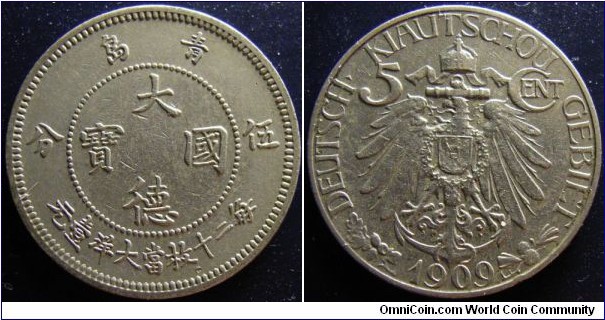
All Qingdao coins were struck in Berlin mint, Germany. Frozen date of 1909, most likely struck all the way till 1914.
The story doesn't end there - some private mints opened up to strike coins. In particular, the Chinese warlord era (1916-1928) complicated the issue of coinage. Coins that were struck were reverted back to old school casting. The second world war had major impact on how coins had to be designed as traditional Chinese themes were affected as well as the metal content. Japanese puppet state Manchuria had to issue fibre coins as aluminium and copper became scarce during the war. High valued silver coins were struck in nickel-copper, traditional copper coins were reduced down to aluminium and fiber in 1944. Some puppet regime attempted to issue coins, only to last for a short period of time.
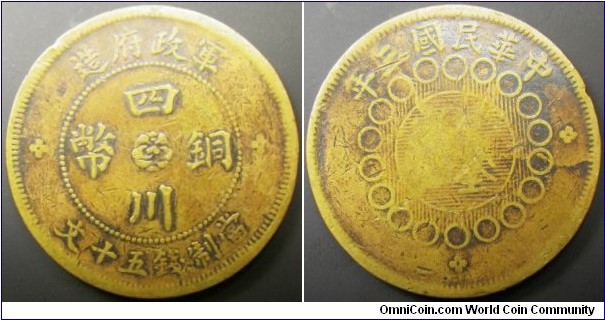 |
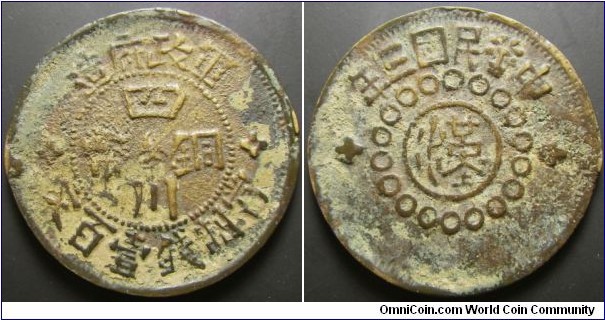 |
| Original issue of Sichuan 50 cash coin | Imitation of Sichuan 100 cash coin. Note the crudeness of the coin |
I have not included some rare coins such as pattern coins struck in Beijing, Shanghai and so forth. To limit the scope of collecting Chinese coins struck around this area, I removed coins that were struck during the Empire and Republican era that do not illustrate provinces where the coins were struck in or struck for.
Nevertheless, enough with the read and enjoy the pictures!
Note: all pictures can be clicked for larger view
| Pinyin name | Chinese character | Traditional Chinese character | Wade-Giles / alternative | English name on coins | Struck in silver or nickel-copper (or antimony for Guizhou Province) | Struck in copper, bronze, brass or other base metals |
| Anhui | 安徽 | Anhwei | AN-HWEI |
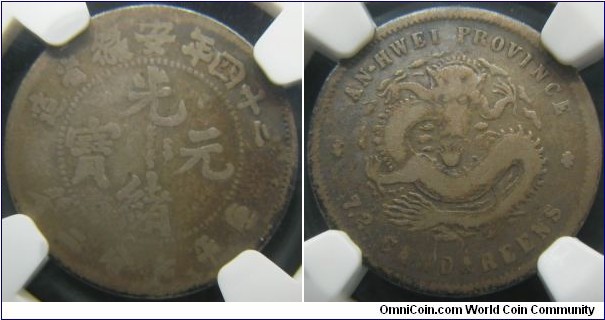 |
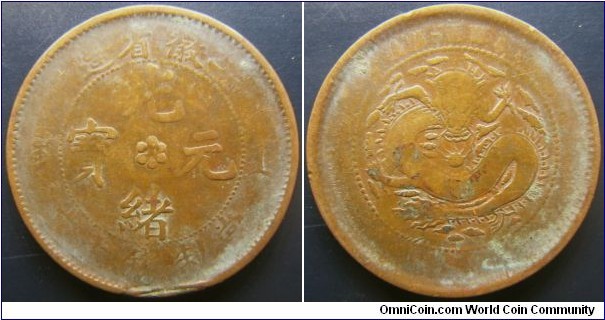 |
|
| Fujian | 福建 | Fukien | FOO-KIEN / F K CUSTOM HOUSE |
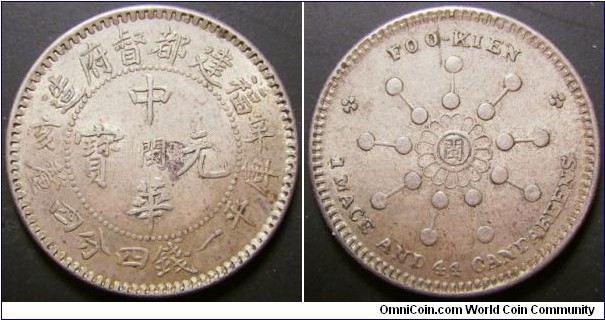 |
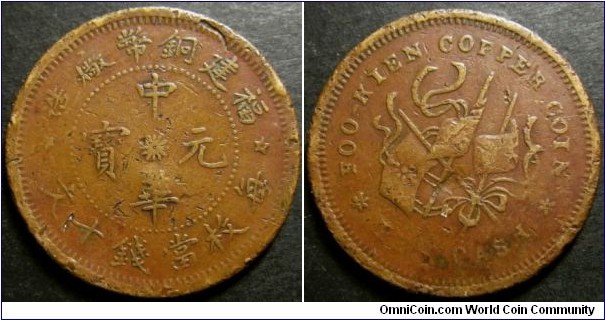 |
|
| Gansu* | 甘肃 | 甘肅 | Kansu |
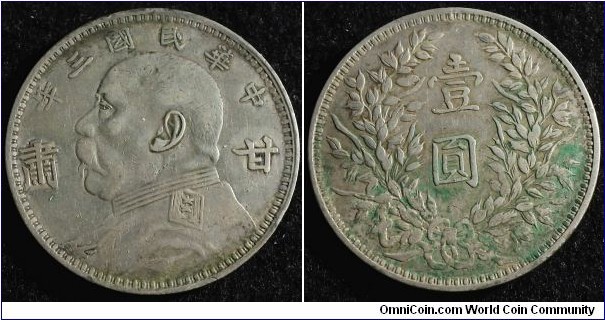 |
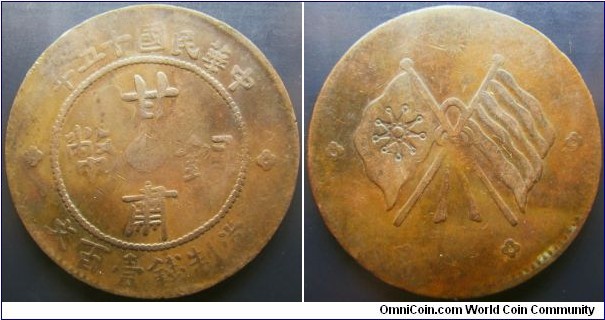 |
|
| Guangdong | 广东 | 廣東 | Kwangtung | KWANG-TUNG |
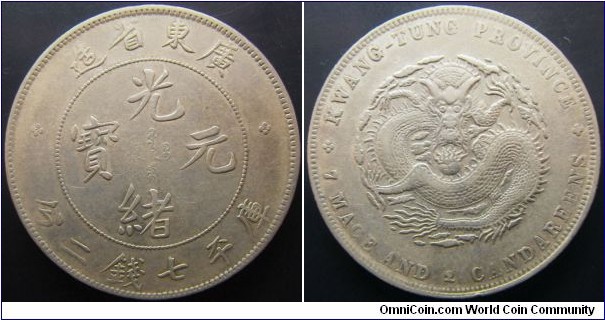 |
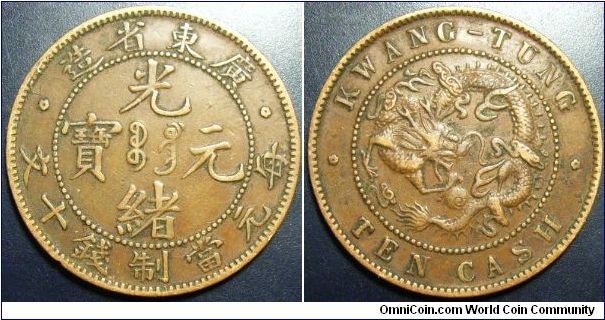 |
| Guangxi |
广西 |
廣西 | Kwangsi | KWANG-SI, KWANG-SEA |
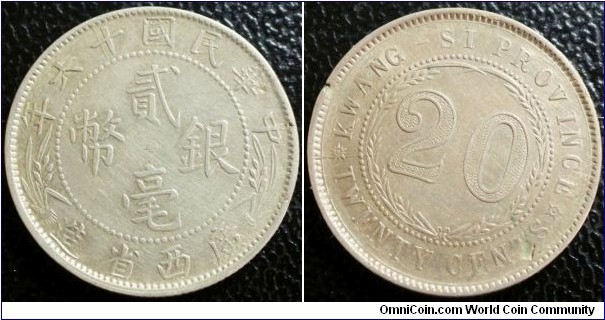 |
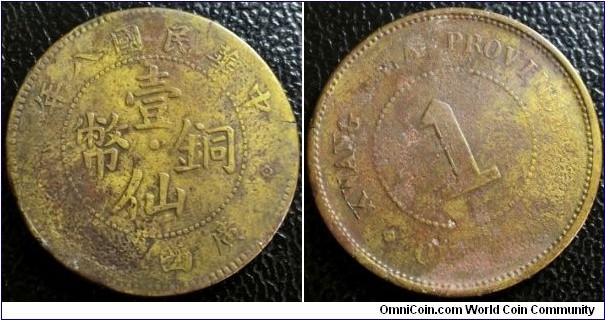 |
| Guizhou | 贵州 | 貴州 | Kweichow |
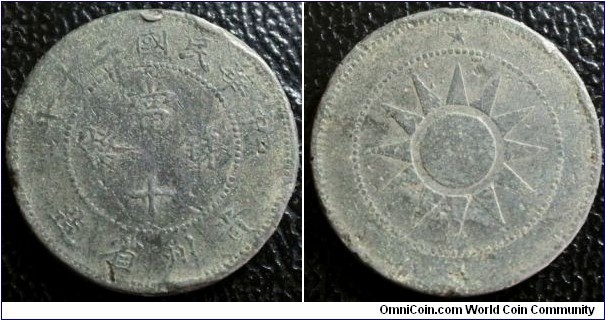 |
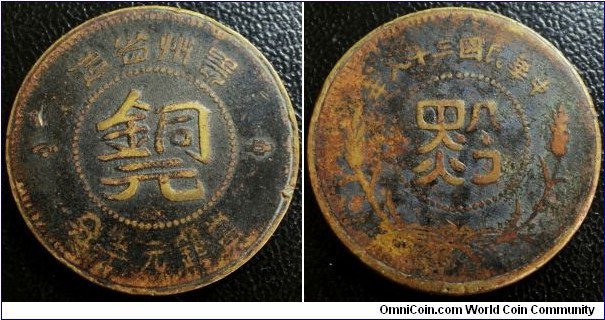 |
|
| Henan | 河南 | Honan | HO-NAN | Not struck |
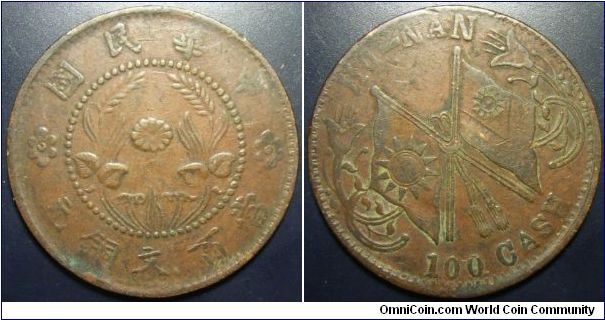 |
|
| Hubei | 湖北 | Hupeh | HU-PEH |
 |
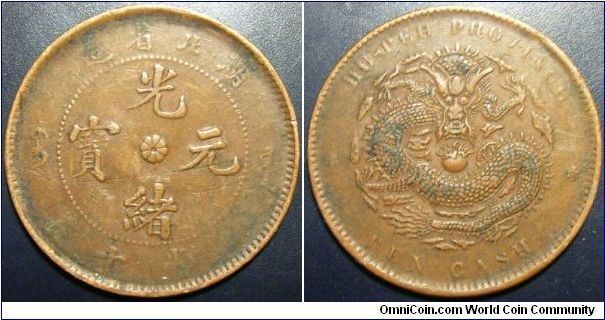 |
|
| Hunan | 湖南 | Hunan | HU-NAN |
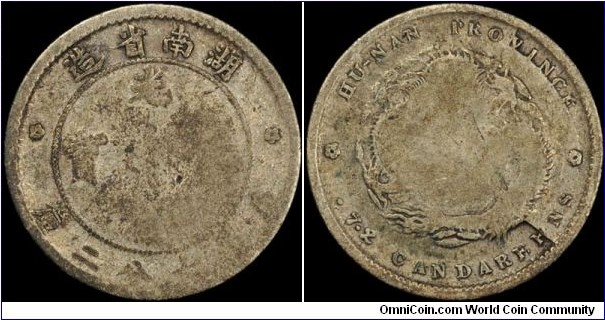 |
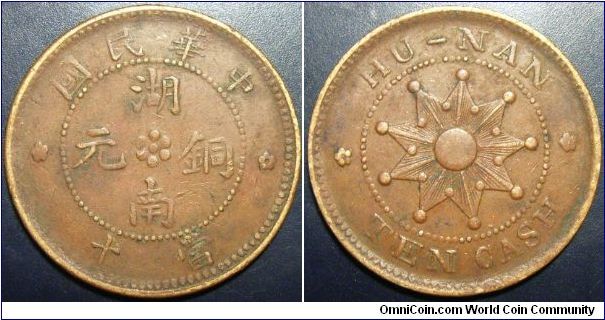 |
|
| Jiangnan | 江南 | Kiangnan | KIANG-NAN |
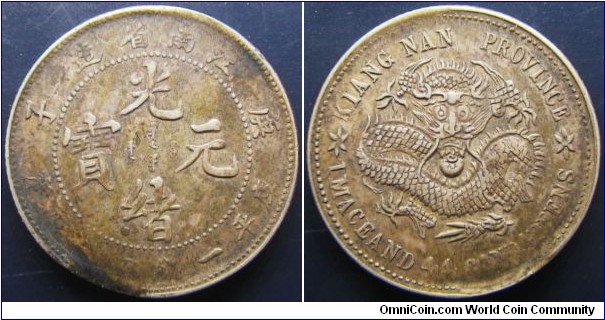 |
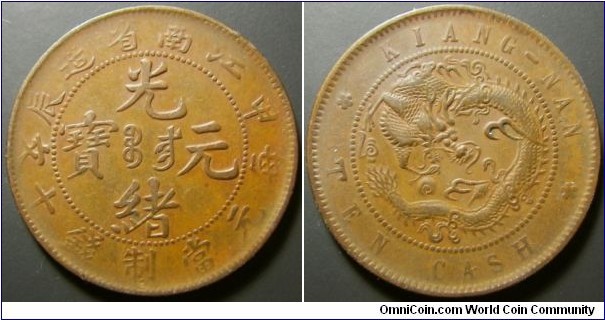 |
|
| Jiangsu | 江苏 | 江蘇 | Kiangsu | KIANG-SOO | Not struck |
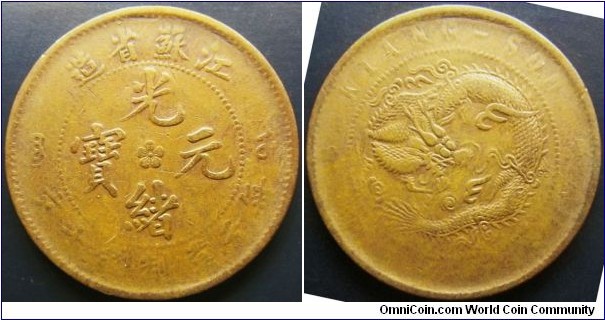 |
| Jiangxi | 江西 | Kiangsi | KIANG-SI, KIANG-SEE | Not struck |
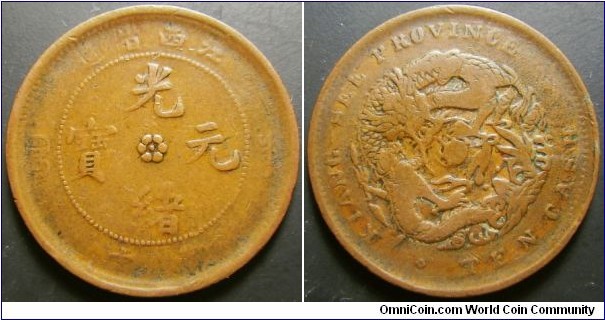 |
|
| Jilin | 吉林 | Kirin | KIRIN |
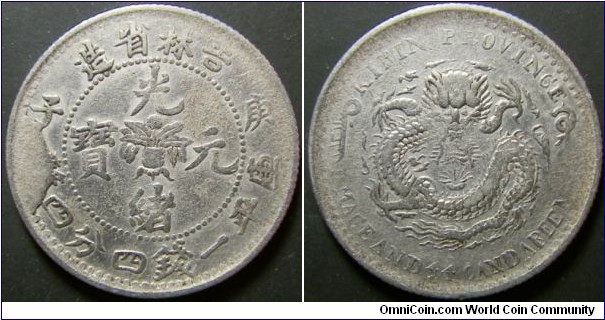 |
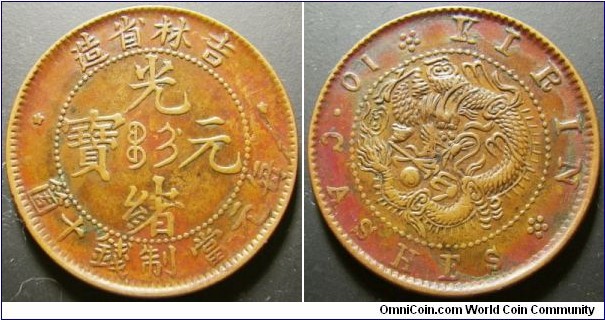 |
|
| Shanxi** | 山西 | Shansi | Uncommon |
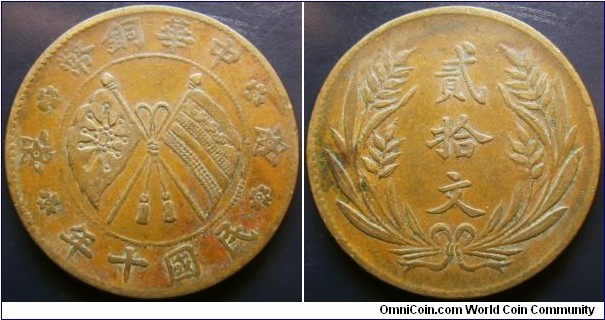 |
||
| Shaanxi |
陕西 |
陝西 |
Shensi | Not struck, pattern coin only |
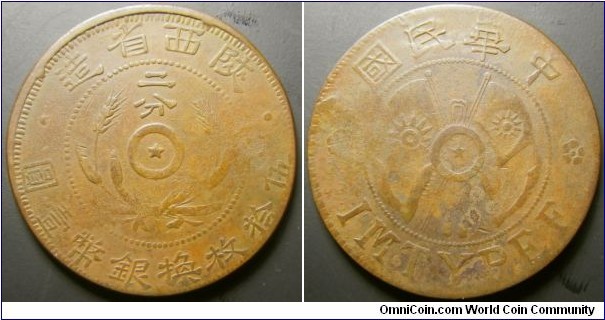 |
|
| Shandong | 山东 | Shantung | SHAN-TUNG | Not struck, pattern coin only |
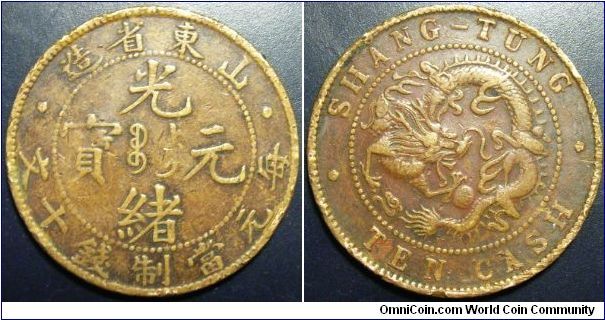 |
|
| Sichuan | 四川 | Szechuan | SZE-CHUEN |
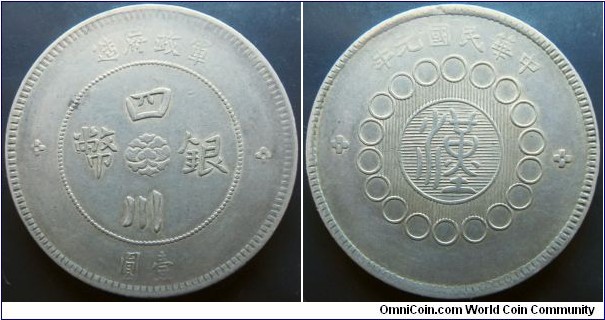 |
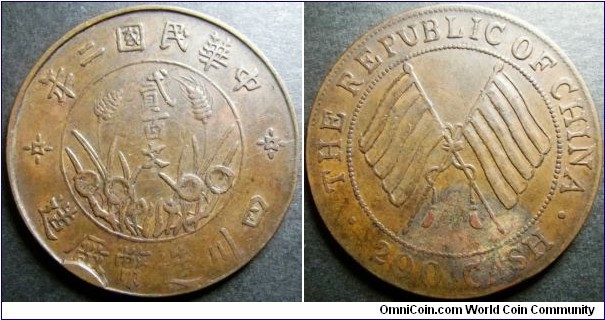 |
|
| Sichuan rubi *** | 四川卢比 | Szechuan rupee |
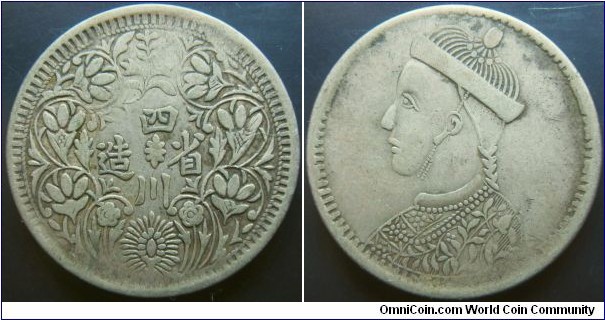 |
Not struck | ||
| Taiwan**** | 台湾 | 臺灣 | Taiwan / Formasa | TAI-WAN |
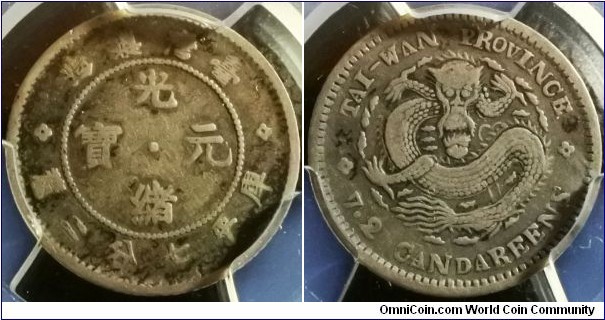 |
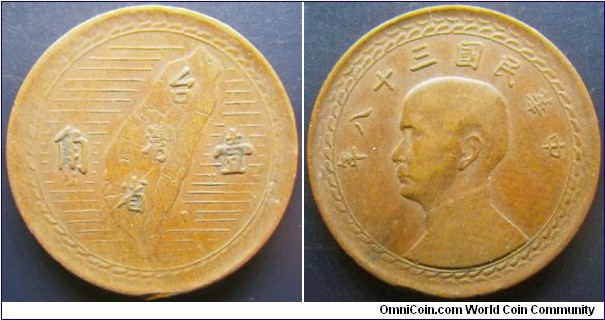 |
| Xinjiang | 新疆 | Sinkiang |
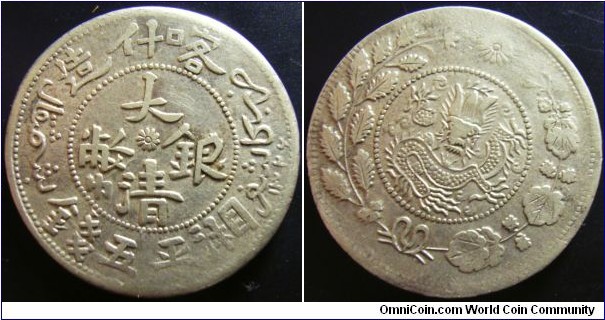 |
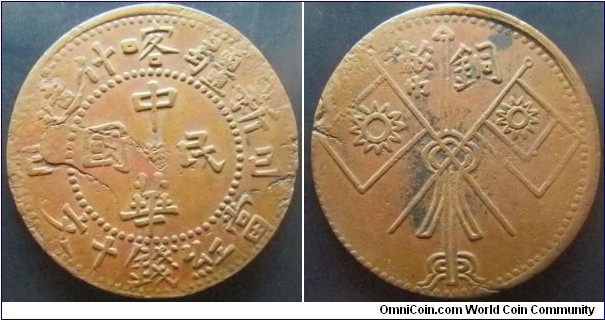 |
||
| Xizang | 西藏 | Tibet | Silver version exist |
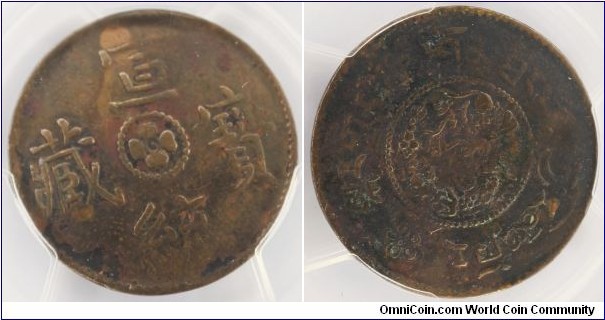 |
||
| Yunnan | 云南 | 雲南 | Yunnan | YUN-NAN |
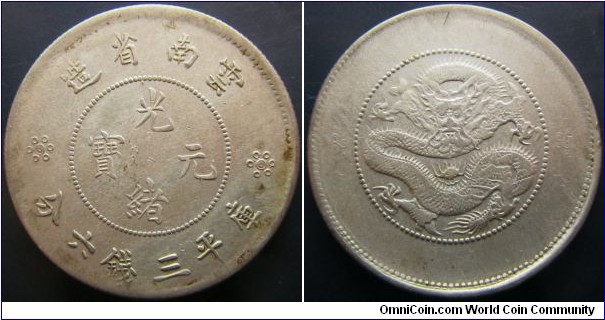 |
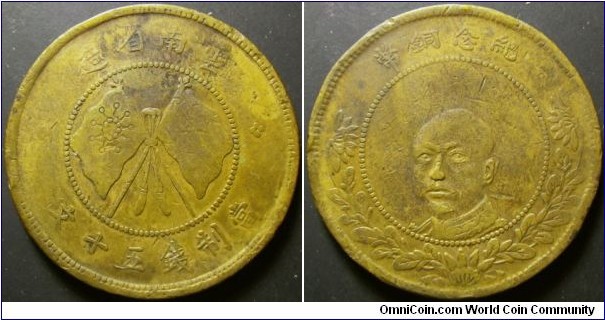 |
| Zhejiang | 浙江 | Chekiang | CHE-KIANG |
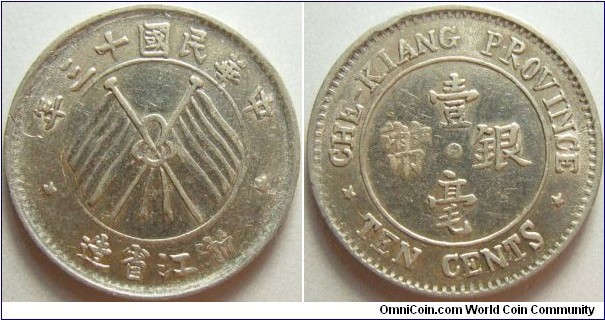 |
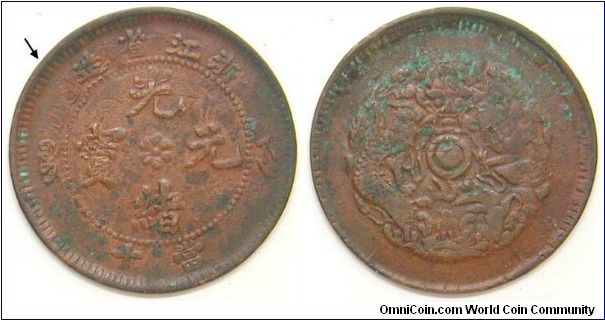 |
* Gansu silver is similar to a normal Yuan Shi Kai however with the extra character Gansu. This is because Gansu coins are struck with lower silver content and are much scarcer.
** Shanxi only struck one type of silver coin, 1.44 mace. The silver coinage seems to be odd - it seems to be a modified die muled with Manchurian Province. Spelt wrongly as 'Niaceuran Provinces' - authenticity doubted but it is catalogued as such. It seems to be uncommon, if not scarce. Shanxi Province has also struck copper coin under Republican era.
*** Sichuan Rupee are meant for use in Tibet
**** The only Taiwan coins that were struck during the Republican era would be 5 and 10 cents dragon coin. No copper coins were struck during Republican era. Coins struck in 1949 or after are struck in Taiwan.
Former / Defunct Province, other cities, banks that issued coins
| Pinyin name | Chinese character | Traditional Chinese character | Wade-Giles / alternative | English name on coins | Struck in silver or nickel-copper | Struck in copper, bronze, brass or other base metals |
| Beiyang
(known as Zhili, Hebei, Liaoling, Shandong) |
北洋 | 北洋 | Beiyang | PEI YANG |
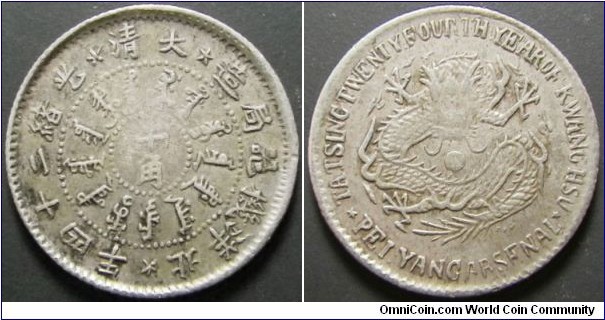 |
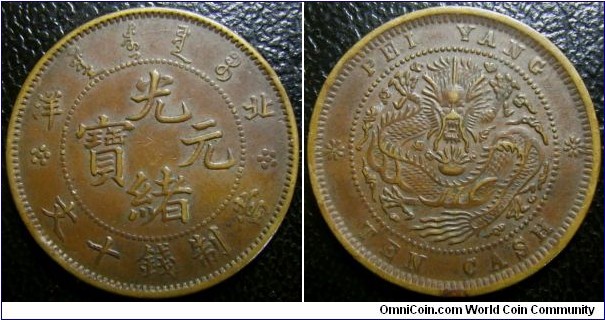 |
| Chuanbian / Xikang
(now part of Sichuan Province) |
川邊 | None known |
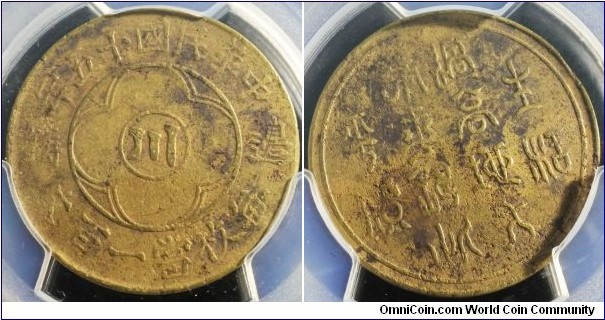 |
|||
| Dongsan | 东三 | 東三 | MANCHURIAN PROVINCES |
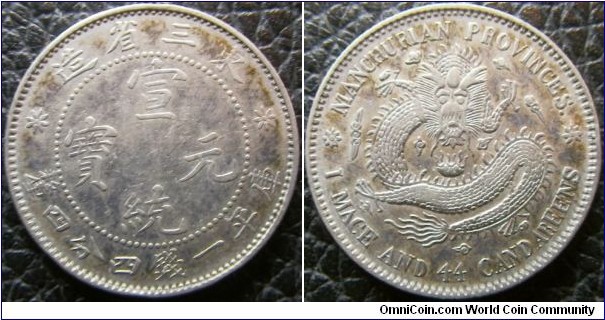 |
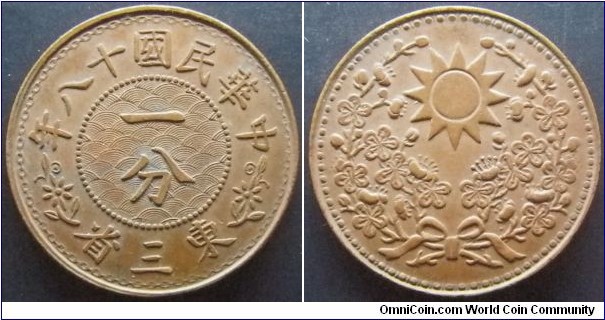 |
|
| Dongtujuesitan / dongtuerqistan | 东突厥斯坦 / 东土耳其斯坦 | 東突厥斯坦 / 東土耳其斯坦 | East Turkestan / Uyghurstan | Silver coin 1 maskuk exist - excessively rare |
 |
|
| Fengtian
(currently known as Liaoning) |
奉天 | Fengtien | Feng-tien |
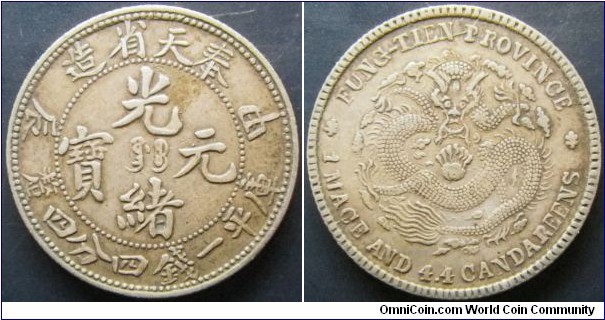 |
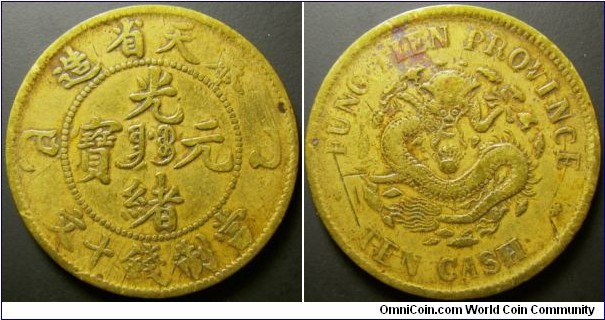 |
|
| Hua xing shang ye ying hang * | 华兴商业银行 | 華興商業銀行 | Hua Hsing Commercial Bank |
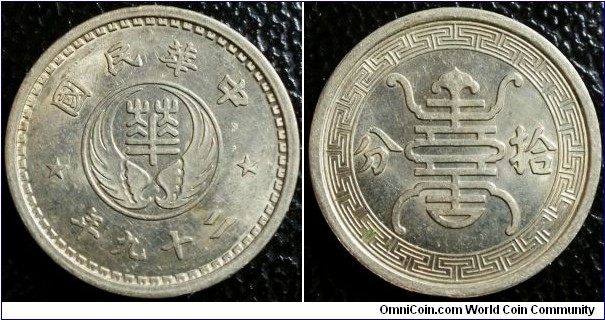 |
||
| Jidong zhenfu | 冀東政府 | Chi Tung Bank, East Hopei Government |
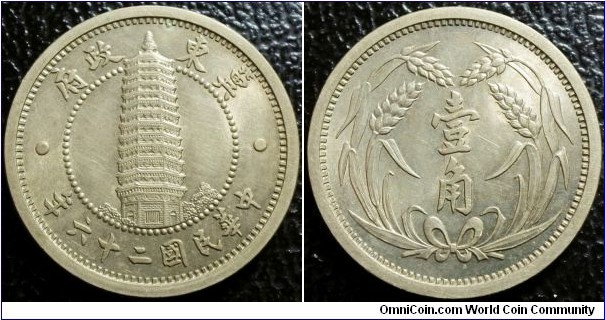 |
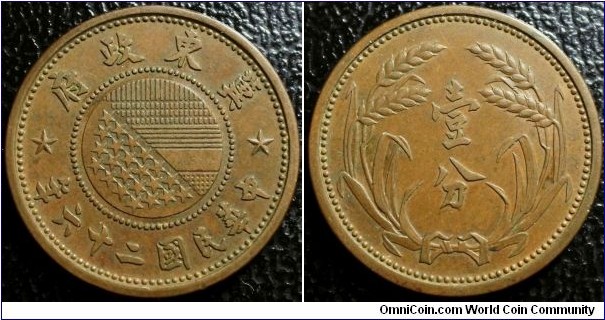 |
||
| Manzhouguo (Manchuria, Inner Mongolia) |
满洲国 | 滿洲國 | Manchu, Manchukuo, Manchoukuo |
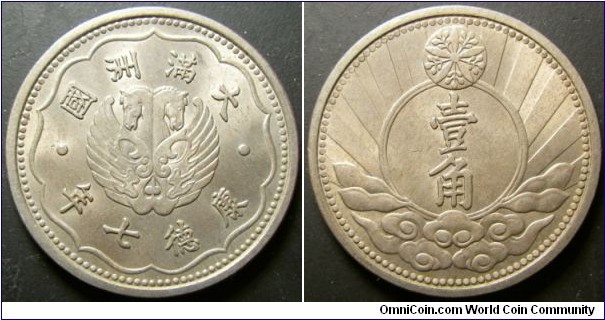 |
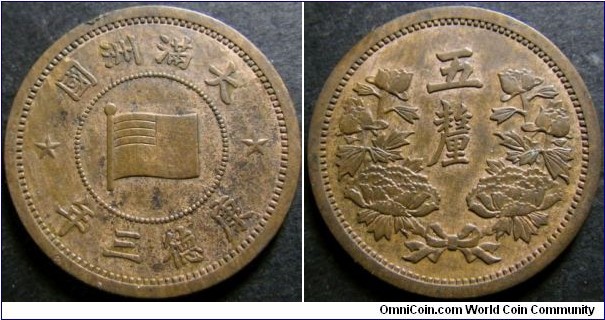 |
|
| Mengjiang | 蒙疆 | 蒙疆 | Meng-chiang |
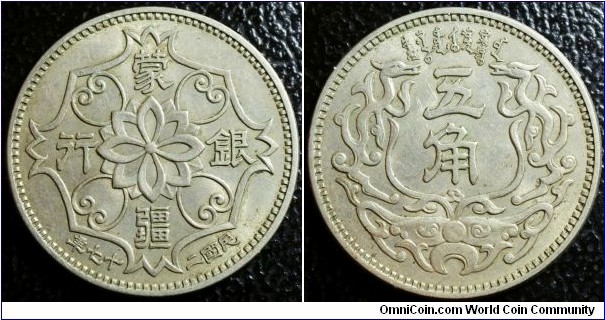 |
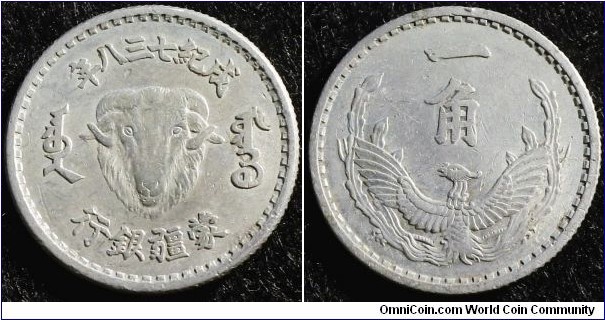 |
|
| Qing dao, Shandong Province | 青岛 | 青島 | Tsingtao / Kiau Chau | Kiautschou (in German) |
 |
Only 5 cents and 10 cents coins were struck |
| Qing jiang, Jiangsu Province |
清江 |
Ching Kiang / Tsing Kiang | Not struck |
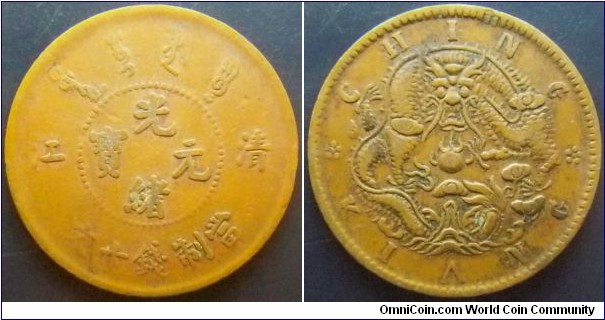 |
||
| Xiang Gang *** | 香港 | Hong Kong |
 |
 |
||
| Zhili | 直隶 | 直隸 | Chihli |
See Beiyang coinage |
||
| Zhongguo lianhe zhunbei yinghang | 中国联合准备银行 | 中國聯合準備銀行 | Federal Reserve Bank of China |
Only three different denominations of aluminium coins were struck |
 |
|
| Zhonghua suweiai gongheguo | 中华苏维埃共和国 | 中華蘇維埃共和國 | Jiangxi Soviet |
 |
 |
|
| Zhonghua suweiai gongheguo - chuanshaan shen | 中华苏维埃共和国 - 川陕省 | 中華蘇維埃共和國 - 川陝省 | Szechuan-Shensi Soviet | Rare |
 |
|
Note - there are some Chinese coins that have been officially restruck such as the Jiangxi Soviet. Be careful of the counterfeits out in the market in particular with the silver coinage!
* Hua Hsing has a set of 4 coins. Only the 10 fen is common. 1 fen is the next common (scarce) but the 5 and 20 fen are rare.
** Inner Mongolia aluminium coins in catalogue are classified as patterns. These were struck in Japan and meant to circulate - most were lost during transportation.
*** Hong Kong during this era was a British colony.
Single character province coinage - only appears for copper
For more information, read here: http://zhidao.baidu.com/question/78797619
More about short form of Chinese provinces: http://www.zhengjicn.com/14.htm
Here is a list of coins that I rate from hardest in my opinion:
| No. | Silver | Base metals |
| 1 | Gansu | Guizhou |
| 2 | Guizhou | East Turkestan |
| 3 | Taiwan | Szechuan-Shensi Soviet, Jiangxi Soviet (not restrike) |
| 4 | Jiangxi Soviet, Szechuan Shensi Soviet | Qingdao |
| 5 | Feng-tien | Jilin |
In my opinion, most world war II era Chinese coins especially struck under the Japanese occupation should be relatively easy to find. East Hopei coinage however can be expensive if you want the set. I shall exclude them from my list of easy coins to look for. Note practically all Chinese crown size coin prices have skyrocketed so I have just listed prices of smaller denomination silver coins, which are still affordable in lower grades.
This is a list of coins that I rate from easiest:
| No. | Silver | Base metals |
| 1 | Guangdong | Guangdong |
| 2 | Yunnan | Hubei |
| 3 | Hubei | Hunan |
| 4 | Jiangnan | Zhejiang |
| 5 | Dongsan (Manchuria) | Honan |
A few books that I would recommend is to pick up some generic books about these
coins. I got two books - zhong guo yin bi mu lu and zhong guo tong bi mu lu
published by heilongjiang publishing company. I got the 2003-2004 edition and
they are good for referencing, not for prices though. They are all in Chinese
but you get the idea. What's better is that you should be able to pick both
books up for under 20 dollars including shipping.
(中国银币目录 & 中国铜币目录)
If you are after variety challenge, you might want to pick up Eduard Kann. His books have been recently republished in 2009, which is split into 3 volumes. Pricy as they will take you over 100USD but worthwhile for your money. In particular, you may also want to look at these two provinces for their variety coinages: Xinjiang and Jilin.
Sexganary Cycle dating:
| Emperor Date | Sexganary Cycle | Western Calendar | |||||||
| 光緒 | Guang Xu | ||||||||
| 元年 | 乙亥 | 1875 | 二十一年 | 乙未 | 1895 | 大同 | Da Tong | ||
| 二年 | 丙子 | 1876 | 二十二年 | 丙申 | 1896 | 二年 | 1933 | ||
| 三年 | 丁丑 | 1877 | 二十三年 | 丁酉 | 1897 | 三年 | 1934 | ||
| 四年 | 戊寅 | 1878 | 二十四年 | 戊戌 | 1898 | ||||
| 五年 | 己卯 | 1879 | 二十五年 | 己亥 | 1899 | ||||
| 六年 | 庚辰 | 1880 | 二十六年 | 庚子 | 1900 | 康德 | Kang De | ||
| 七年 | 辛巳 | 1881 | 二十七年 | 辛丑 | 1901 | 元年 | 1934 | ||
| 八年 | 壬午 | 1882 | 二十八年 | 壬寅 | 1902 | 二年 | 1935 | ||
| 九年 | 癸未 | 1883 | 二十九年 | 癸卯 | 1903 | 三年 | 1936 | ||
| 十年 | 甲申 | 1884 | 三十年 | 甲辰 | 1904 | 四年 | 1937 | ||
| 十一年 | 乙酉 | 1885 | 三十一年 | 乙巳 | 1905 | 五年 | 1938 | ||
| 十二年 | 丙戌 | 1886 | 三十二年 | 丙午 | 1906 | 六年 | 1939 | ||
| 十三年 | 丁亥 | 1887 | 三十三年 | 丁未 | 1907 | 七年 | 1940 | ||
| 十四年 | 戊子 | 1888 | 三十四年 | 戊申 | 1908 | 八年 | 1941 | ||
| 十五年 | 己丑 | 1889 | 九年 | 1942 | |||||
| 十六年 | 庚寅 | 1890 | 宣統 | Xuan Tong | 十年 | 1943 | |||
| 十七年 | 辛卯 | 1891 | 元年 | 己酉 | 1909 | 十一年 | 1944 | ||
| 十八年 | 壬辰 | 1892 | 二年 | 庚戌 | 1910 | 十二年 | 1945 | ||
| 十九年 | 癸巳 | 1893 | 三年 | 辛亥 | 1911 | ||||
| 二十年 | 甲午 | 1894 | 九年 | 丁巳 | 1917 |
That will be all for now and best of luck to look for them!
![]()
Last updated: 20 June 2025